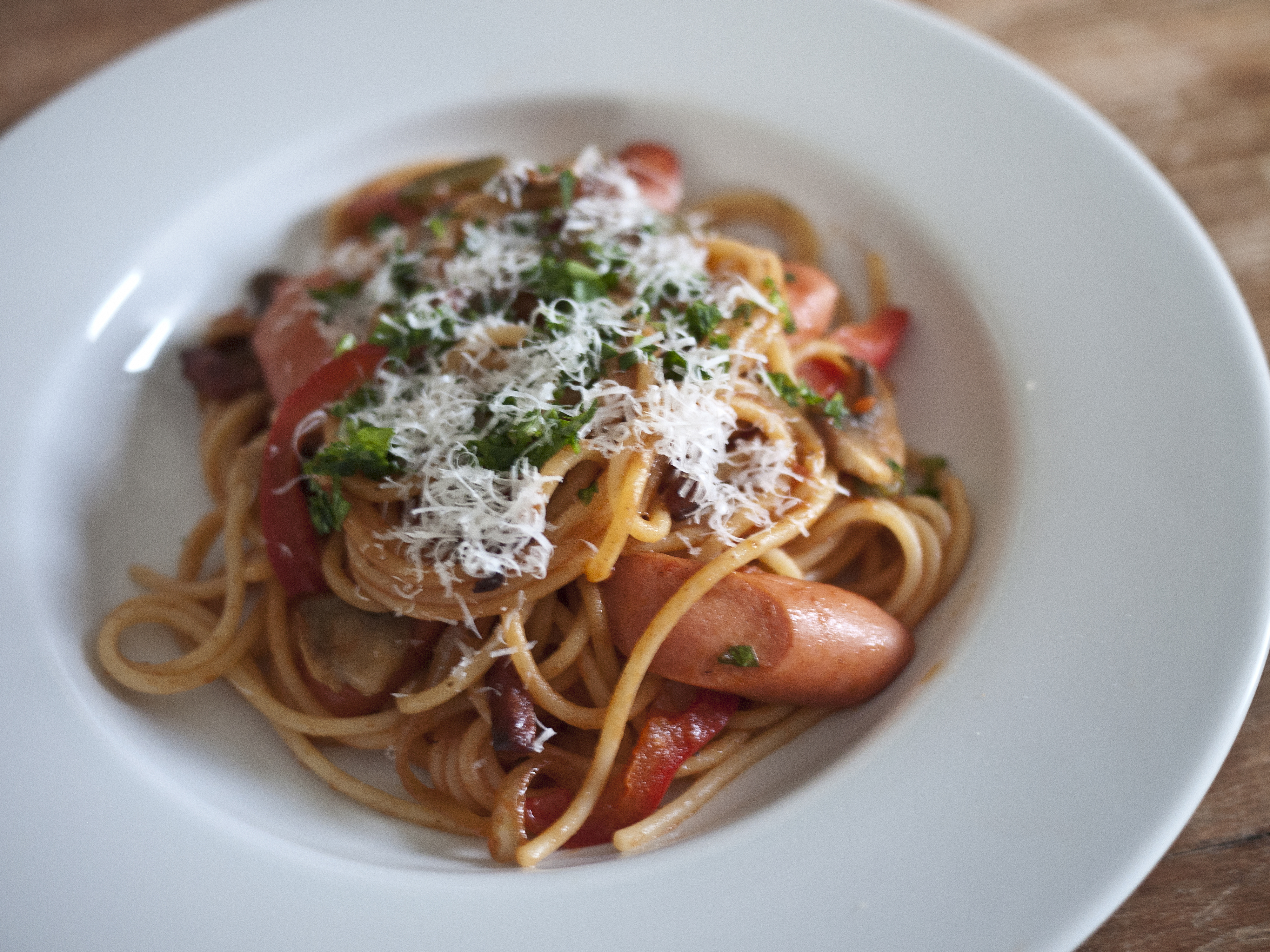On Aug. 30, 1945, newly appointed Supreme Commander for the Allied Powers Gen. Douglas MacArthur landed at Atsugi Airport in Yokohama and headed straight to an elegant hotel overlooking the harbor that had escaped destruction during the war. The Hotel New Grand served as his headquarters for three days, before turning into a residence for U.S. officers.
Anxious to please his new customers, Shigetada Irie, the head chef of the hotel, drew inspiration from the spaghetti with ketchup that was part of U.S. military rations to create a new pasta dish that he called "spaghetti Napolitan." According to historical accounts, Irie did not use ketchup in his sauce; after all, he had been trained in methods of classical French and Italian cuisine by the first head chef of the hotel, a Swiss. Instead he used canned tomato puree, flavored it with sauteed garlic and bacon, and added canned mushrooms and chopped vegetables. He later supposedly left the pasta for hours after cooking it so that the texture would become more like that of udon noodles, suited to Japanese tastes. (The hotel still serves its version of spaghetti Napolitan, which includes a tomato-based sauce without a trace of ketchup.)
The dish was a big hit and it was soon copied by other restaurants, but since tomato puree, not to mention fresh tomatoes, was expensive and scarce, ketchup was used instead. Ketchup was regarded as a high-quality condiment in Japan well into the 1960s, never acquiring the down-market image it has in the West.

















With your current subscription plan you can comment on stories. However, before writing your first comment, please create a display name in the Profile section of your subscriber account page.